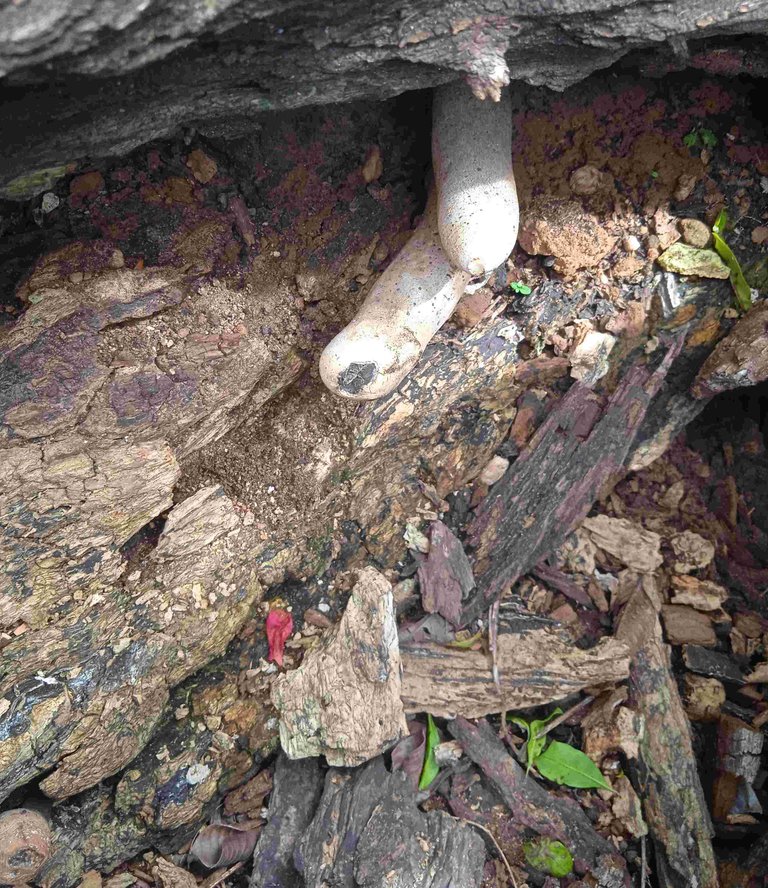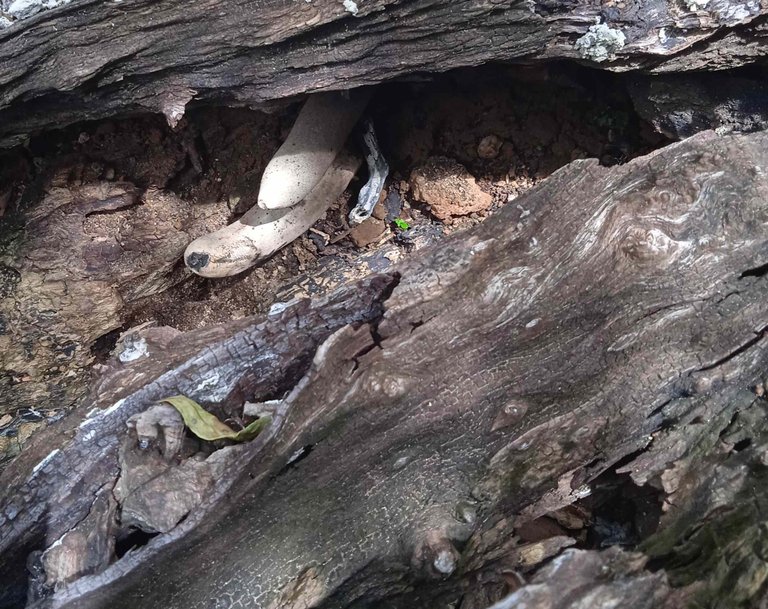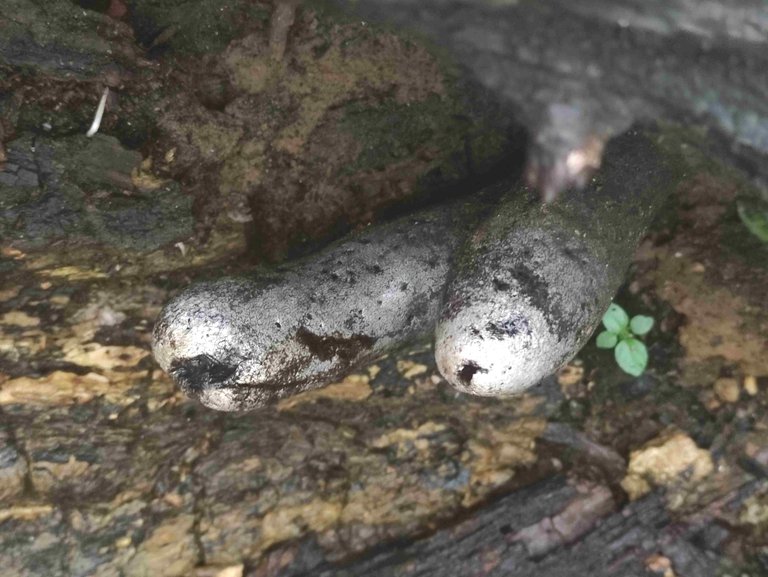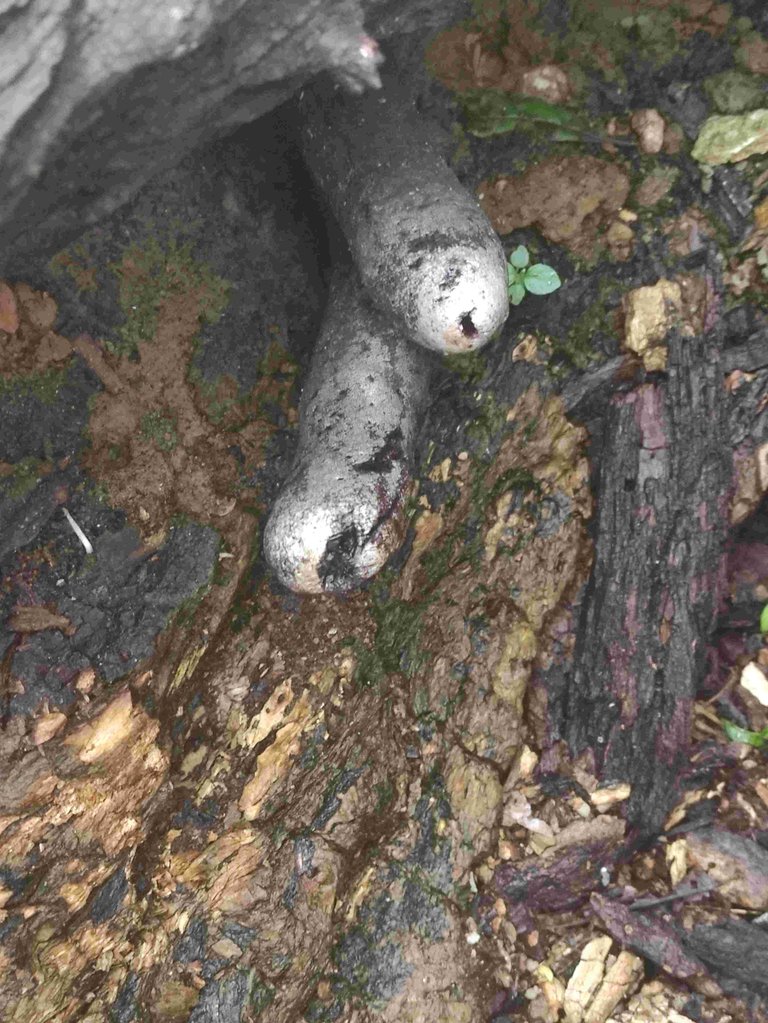
Saludos a todos y feliz #FungiFriday, (ya casi finalizando el día). Aprovechando las continuas lluvias que caen en el lugar que habito, estas semanas me he dedicado a buscar y fotografiar hongos, y dos semanas atrás encontré unos hongos muy raros, en la parte inferior de un tronco de tamarindo caído, y hoy en la tarde las volví a ver y volví a fotografiar, así que aquí se los comparto.

Ya estoy habituada a que, si quiero encontrar alguna seta en mi solar, debo observar con atención y detalle, especialmente en los restos vegetales o de madera, y eso precisamente hacía cuando encontré este extraño hongo, con una forma fálica, y comparativamente de mayor tamaño que los hongos anteriores. Se trata de Xylaria longipes, bueno, esa fue la aproximación más cercana que encontré gracias a Google Lens, aunque también me parecieron similares a Xylaria polymorpha.


Dos semanas atrás las fotografié, (son las fotos en donde se ve mayor cantidad de luz solar), y se veía más diáfana la superficie de ambas setas. Realmente son muy raras, pues su forma cilíndrica, fálica, de punta redondeada, es algo distante a la idea que generalmente se tiene de los hongos. En las primeras fotos, el color es blanquecino, mientras que en las dos últimas que tomé hoy luego de un gran aguacero, se ven grisáceos, con la punta blanca. Recuerdo que el año pasado también los ví, pero eran más pequeños, esta vez son más grandes, creo que fácilmente rebasan los 6.5 cm de máximo de longitud que dice la bibliografía que consulté respecto al tamaño de estas setas.


El hecho de que estos hongos no estuviesen formados en racimos, sino dos, me permitió diferenciarlas aún mejor de Xylaria polymorpha, ya que la bibliografía consultada expresa que éstos últimos (Xylaria polymorpha), crecen en racimos, por eso también se les conoce como “dedos de muerto” porque asemejan a una mano de un muerto, mientras que Xylaria longipes puede crecer en grupo o en solitario. Otro elemento distintivo es la forma de garrote que este hongo tiene, que es propio de ella. Según pude deducir de mi investigación, ambos ejemplares son jóvenes, ya que después de la madurez, adquieren un color negro y se les agrieta la superficie, aunque en las segundas fotos, las que tomé hoy, sí se evidencian señales de agrietamiento, es decir, que están madurando.


According to the bibliography consulted (see the links consulted at the end of this post), these fungi present the following general characteristics:
- They are saprophytes, since they grow on decaying hardwood, and the tamarind trunk corresponds to this type of wood. I was also able to find in my bibliographic review that the wood in which this fungus has grown is optimal for making musical instruments. It would be interesting to take the remains of the tamarind trunk and take them to a luthier to check this.
- They are club-shaped, which is obvious in the photos, it is a phallic shape.
- They are endemic to North America, although I live in South America, in the Caribbean area, that is why they will be so rare to see here.
- The length of this one varies between 2.5 to 6.5 cm, although these seem 10 cm long to me, I didn't really measure them.
- They are not edible and have no smell.

De acuerdo a la bibliografía consultada (ver los enlaces consultados al final de este post), estos hongos presentan las siguientes características generales:
- Son saprófitos, ya que crecen sobre madera dura en descomposición, y el tronco de tamarindo, corresponde a este tipo de madera. También pude encontrar en mi revisión bibliográfica, que la madera en la que ha crecido este hongo, es óptima para hacer instrumentos musicales. Sería interesante tomar los restos del tronco de tamarindo y llevarlos a un lutier, para comprobar esto.
- Tienen forma de maza, lo que es obvio en las fotos, es una forma fálica.
- Son endémicos de Norteamérica, aunque yo vivo en Sudamérica, en la zona del Caribe, por eso serán tan raros de ver aquí.
- La longitud de éste varía entre 2.5 a 6.5 cm, aunque estos me parecen de 10 cm de largo, realmente no los medí.
- No son comestibles y carecen de olor.

Aquí finalizo mi post de hoy, en el cual quise compartir unos hongos muy extraños y raros de ver, especialmente en mi solar. Saludos a todos, y recuerden que todos los seres vivos, son importantísimos para la vida en nuestro planeta. ¡Abrazos!

- Todas las fotos de este post son de mi autoría y fueron tomadas con mi teléfono Xiomi REDMI 8 A // These photos are my own, and were taken with a Xiomi REDMI 8 A phone
- Los divisores son cortesía de @eve66 quien comparte bellos diseños que embellecen el maquetado de nuestras publicaciones. // The dividers used are courtesy of @eve66 who shares beautiful designs that embellish the layout of our post.

Todo el contenido, excepto los divisores, es de mi propiedad y está sujeto a derechos de autor // All content except the dividers is my property and subject to copyrigh



Delegations welcome!

Delegations welcome!
